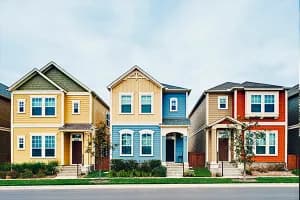
Higher home prices are translating into mega wealth for those who own.
Thirty-four percent of residential properties in the U.S. with a mortgage were considered “equity rich” in the second quarter, which means the combined estimated amount of loans secured by the properties was at least 50% of its estimated market value, according to a new report from ATTOM Data Solutions. The number continues to grow, increasing from 31.2% in the first quarter and 27.5% in the second quarter of 2020.
“The huge home price jumps over the past year that helped millions of sellers earn big profits also kicked in big-time during the second quarter for other owners who saw their typical equity improve more than at any time in the last two years,” said Todd Teta, chief product officer with ATTOM. “Instead of the virus pandemic harming homeowners, it’s helped create conditions that have boosted the balance sheets of households all across the country.”
Every state saw equity-rich levels rise in the second quarter. Western and northeastern states saw the biggest improvement, led by Arizona (up from 16.3% in the first quarter of 2021 to 39.7% in the second quarter), Massachusetts (from 25.3% to 41.7%); New Hampshire (20.4% to 36.1%); and Rhode Island (21% to 36.4%), according to ATTOM Data Solutions’ report. Overall, the states with the highest level of equity-rich homes were Idaho (54.2%) and California (53.8%).
On a metro level, the areas with the highest share of mortgaged properties that were equity rich in the second quarter were:
- San Jose, Calif.: 69.4% equity-rich
- San Francisco: 64.9%
- Los Angeles: 57.9%
- Boise, Idaho: 57.4%
- San Diego: 54.3%
In the Northeast region, Boston had the highest number of equity-rich properties at 43.9% while the South’s leader was Austin, Texas (52.3%). Grand Rapids, Mich., has the highest percentage of equity-rich properties in the Midwest at 37.2%.
Only 4.1% of mortgage homes across the U.S. were considered seriously underwater in the second quarter. That is when the combined estimated balance of loans secured by the property is at least 25% more than the property’s estimated market value.








